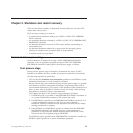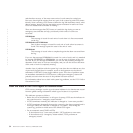
You are recommended always to use the CESD shutdown-assist transaction when
shutting down your CICS regions. You can use the DFHCESD program “as is”, or
use the supplied source code as the basis for your own customized version (CICS
supplies versions in assembler, COBOL, and PL/I). For more information about the
operation of the CICS-supplied shutdown assist program, see the CICS Operations
and Utilities Guide.
Cataloging CICS resources
CICS uses a global catalog data set (DFHGCD) and a local catalog data set
(DFHLCD) to store information that is passed from one execution of CICS, through
a shutdown, to the next execution of CICS.
This information is used for warm and emergency restarts, and to a lesser extent
for cold starts. If the global catalog fails (for reasons other than filling the available
space), the recovery manager control record is lost. Without this, it is impossible to
perform a warm, emergency, or cold start, and the only possibility is then an initial
start. For example, if the failure is due to an I/O error, you cannot restart CICS.
Usually, if the global catalog fills, CICS abnormally terminates, in which case you
could define more space and attempt an emergency restart.
Consider putting the catalog data sets on the most reliable storage
available—RAID or dual-copy devices—to ensure maximum protection of the data.
Taking ordinary copies is not recommended because of the risk of getting out of
step with the system log.
From a restart point of view, the system log and the CICS catalog (both data sets)
form one logical set of data, and all of them are required for a restart.
The CICS System Definition Guide tells you how to create and initialize these CICS
catalog data sets.
Global catalog
The global catalog contains information that CICS requires on a restart.
CICS uses the global catalog to store the following information:
v The names of the system log streams.
v Copies of tables of installed resource definitions, and related information, for the
following:
– Transactions and transaction classes
– DB2 resource definitions
– Programs, mapsets, and partitionsets (including autoinstalled programs,
subject to the operand you specify on the PGAICTLG system initialization
parameter)
– Terminals and typeterms (for predefined and autoinstalled resources)
– Autoinstall terminal models
– Profiles
– Connections, sessions, and partners
– BDAM and VSAM files (including data tables) and
- VSAM LSR pool share control blocks
- Data set names and data set name blocks
Chapter 3. Shutdown and restart recovery 31


















